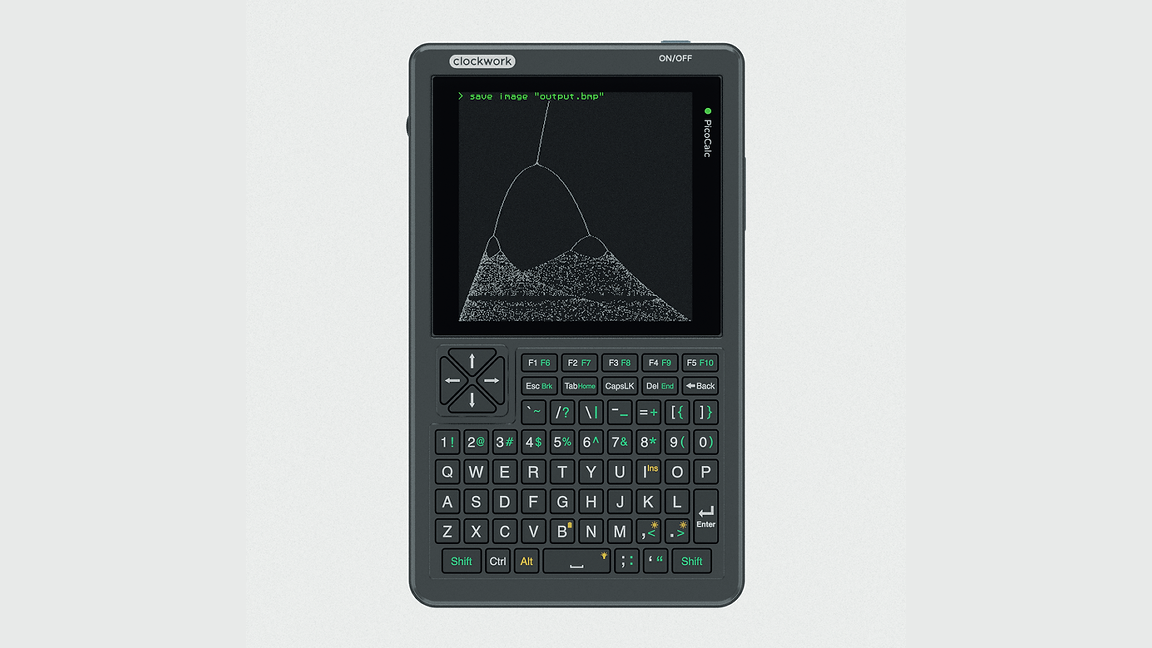Raspberry Pi Pico powers $75 PicoCalc portable programming handheld

Building a Raspberry Pi project from scratch is always a satisfying experience and one of the best ways to scratch that itch is to invest in an all-in-one kit. Today we've got a really cool one to share with you from ClockworkPi known as the PicoCalc kit. It uses our favorite microcontroller, the Raspberry Pi Pico to drive a gorgeous calculator.
This calculator offers much more than the ability to handle advanced mathematical calculations (but it does that really well). It supports the ability for you to code programs from the ground up using and range of languages such as Python, Lua, Rust, GoLang, C and even BASIC. I think we all used to tinker with graphing calculators back in the day but this is taking the idea to a new extreme. You can play games and even listen to MP3 files with the PicoCalc. This level of depth isn't too surprising given ClockworkPis track record of products. In the past, we've covered its uConsole which made waves in the maker community when it was released.
ClockworkPi refers to the PicoCalc as not just a calculator but a "cost-effective MCU platform". It aims to provide a capable mobile device that can aid in the development of other projects, function as an IoT device and even serve as a teaching platform thanks to its GPIO expansion ports which let you add additional hardware.



The kit includes everything you need to create the project. You get a beautiful PCB referred to as the ClockworkPi v2.0 along with a Raspberry Pi Pico H which comes with headers attached. You can replace the Pico H with a Raspberry Pi Pico 2 or 2W, giving you a little more CPU power. Because you can't upgrade the RAM on the Pico, ClockworkPi has elected to add 8MB of PSRAM to the custom PCB. PSRAM isn't as fast as the onboard RAM, but it is plenty fast for this project.
Picocalc features a 4-inch IPS display that has a resolution of 320 x 320px and connects via SPI. You also get a full, rubber QWERTY keyboard to use for input. It has two speakers for audio output, as well. For a professional finish, you get a nice ABS shell along with a tempered glass cover.
The kit costs a total of $75 and includes all of the components we mentioned above. We also explained that the device is intended to be mobile but you may notice we didn't mention how it's powered. The unit requires one 18650 battery, but there is space for two cells which are not included. You will need to purchase those separately to power the PicoCalc.
The project files, schematics and design materials are released under a GPL v3 license via GitHub.
If you want to get a closer look at this Raspberry Pi project, head over to the ClockworkPi website for more details and purchase options.
Get Tom's Hardware's best news and in-depth reviews, straight to your inbox.

Ash Hill is a contributing writer for Tom's Hardware with a wealth of experience in the hobby electronics, 3D printing and PCs. She manages the Pi projects of the month and much of our daily Raspberry Pi reporting while also finding the best coupons and deals on all tech.
-
cyrusfox Its beautiful, but as I would mainly use this as a calculator I hate the QWERTY, and would much rather a normal 10key plus extended to get all the other functions. Might need to pick this up still...Reply -
helper800 Reply
It seems like it would replace the features of even the most expensive graphics calcs, though I am not sure the extent of its functionality. I would also caution any students looking to use this for testing as it will almost certainly not be allowed. Cool device, I wish it was around when I was in college.cyrusfox said:Its beautiful, but as I would mainly use this as a calculator I hate the QWERTY, and would much rather a normal 10key plus extended to get all the other functions. Might need to pick this up still... -
cyrusfox $25 shipping, sheesh, that is a bit of a turn off when it is 1/3 the total price, also no way to configure with a Pico 2 (even though that is $5 on the side). I was about to pull the trigger but the shipping sticker shock was too much, I think $10 is right and $15 is pushing it, $25 though... Where is this coming from?Reply -
helper800 Reply
I have paid as much as 70 dollars for shipping before for a custom item handmade in South Africa. Pull the trigger I say!cyrusfox said:$25 shipping, sheesh, that is a bit of a turn off when it is 1/3 the total price, also no way to configure with a Pico 2 (even though that is $5 on the side). I was about to pull the trigger but the shipping sticker shock was too much, I think $10 is right and $15 is pushing it, $25 though... Where is this coming from? -
bit_user Reply
If it used a full blown Pi Compute Module, I'd feel more comfortable about the functionality aspect. The concern I'd have about Pico is that it can't run Linux (not natively, anyway). So, that could limit you quite a bit, in terms of what software it'll run.helper800 said:It seems like it would replace the features of even the most expensive graphics calcs, though I am not sure the extent of its functionality.
However, battery life is surely much better with Pico than any of the Compute Modules. -
helper800 Reply
I wonder when someone will cram a Framework motherboard into a handheld PC like this.bit_user said:If it used a full blown Pi Compute Module, I'd feel more comfortable about the functionality aspect. The concern I'd have about Pico is that it can't run Linux (not natively, anyway). So, that could limit you quite a bit, in terms of what software it'll run.
However, battery life is surely much better with Pico than any of the Compute Modules.